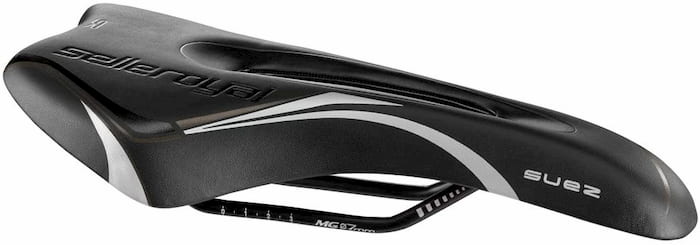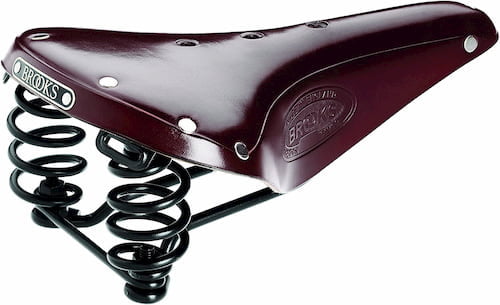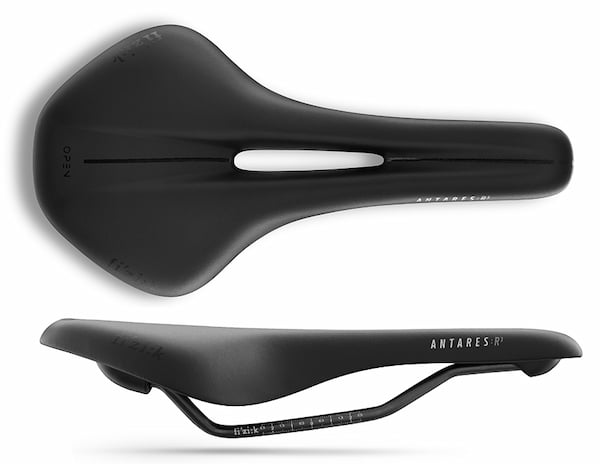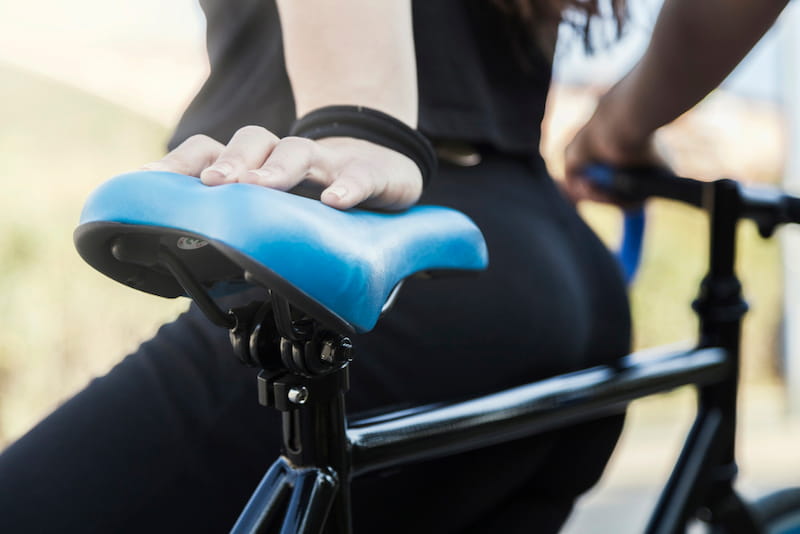An uncomfortable saddle (or “seat”) is one of the common problems for cyclists. In this article, I’ll explain how to solve that problem, and how to find a bicycle saddle that’s comfortable for you. Now, no one can choose the right saddle for you, it’s probably the most subjective part of bicycle fitting. However, I will explain what to look for and, depending on the type of discomfort you are feeling (and your current saddle type), recommend what is most likely to help.
This could reduce the number of different models you try to only a few, instead of dozens. I can’t promise more than that – such has been my experience over the past decades, and if I invent a perfect formula for everyone, I’ll make sure to publish it here. 🙂
1. Start with the saddle you already have
I know, I know – it’s uncomfortable. Nonetheless, hear me out (or don’t – it’s your backside, your call 🙂 ). Why is it important to start with the saddle you already have? For two reasons:
- You’ll save some money if it turns out you don’t need a new saddle after all.
- If it turns out you need a saddle replacement, the info in this first “chapter” will help you get the idea of what kind of saddle is most likely to work for you.
There are only three steps. Are you ready? Let’s go! 🙂
Note: in a separate article, I’ve explained how to set a comfortable bicycle riding position. Here, I’ll just hit the high points regarding saddle.
1.1. Set the saddle to be horizontal, and in the middle of the seatpost clamp
Get a spirit level if you need to, but set the saddle to be horizontal.

Picture 1
- If your saddle’s nose is tilted too much upwards, that can cause pressure in the genital region (for both women and men).
- If the saddle’s nose is tilted too much downwards, it can cause hand and neck pain (too much of your weight gets distributed to the arms), as well as some numbness in your lower back and butt.
Later, we will play with fine-tuning the saddle tilt, but let’s start with horizontal.
While you’re at it, set the saddle rails to be clamped by their central portion – the saddle shown below is too much forward mounted:

Picture 2
The saddle’s fore-aft position mostly affects pedalling efficiency (power) and hand pressure (load), but we certainly wish to eliminate any extremes while we are looking for the source of discomfort.
1.2. Set the saddle to an optimal height
This is very important so don’t skip this step.
- If your saddle is set too high, a lot more pressure goes to your lower back, butt, and genital area.
- A too-low saddle puts a lot more stress on your knees and unloads your back a bit, so you won’t get a clear picture of where the discomfort comes from.

Then, when the foot is correctly placed on the pedal, the knee will be slightly bent, which is ideal for efficient pedalling.
Picture 3
I’ve explained this in more detail in the article about configuring a comfortable riding position, but briefly put: no, you needn’t be able to comfortably reach the ground from the saddle, that usually means it’s placed too low (except on some vintage frames).
1.3. Give it a test ride
Now that we’ve dealt with the potential problem causes regardless of the saddle type, give it a few test rides, and see how it fares.
Start with a few shorter rides (up to 30 minutes), then with a few mid-length rides (up to an hour or two).
Give your body some time to adapt. This goes especially if you haven’t been cycling for a month (or longer).
It is very common that people start having saddle issues in the spring – while the real problem was a long break from cycling. It usually goes like this:
- The saddle is too hard, so a softer one is bought.
- After a few months of riding, the softer saddle becomes uncomfortable (because it doesn’t give proper support for the seat bones, and gives too much chafing).
If you are having problems even after a few weeks (and they aren’t diminishing), read on.
2. Finding a more comfortable bicycle saddle
OK, so you’ve tried everything and confirmed that you definitely need a different saddle. Even if you are lucky enough to have a bike shop that lets you test saddles for a few days, it still helps if you can reduce the number of trial and errors to a minimum (saving yourself the time and hassle if nothing else).
Should you first try with a softer, harder, wider, or narrower saddle? Which one of the hundreds of different shapes and models is most likely to fit you?
I wrote a series of articles explaining materials, padding softness, shapes (with or without a cutout), and optimal width. Each article explains the pros and cons of each saddle aspect, so depending on the discomfort that you are feeling, and your riding position (and sit bone width), you’ll be able to know which way to “change” (go with a wider, or narrower saddle, for example). I suggest you read these articles – most are very short:
- Bicycle saddle fit [01] Materials they are made of
- Bicycle saddle fit [02] Saddle padding
- Bicycle saddle fit [03] Saddle shape
- Bicycle saddle fit [04] Measuring sit bone width
- Bicycle saddle fit [05] Optimal saddle width
- My bicycle saddle is uncomfortable, what should I do?
Nonetheless, here I’ll discuss some of the, I’d say most common, problems and offer solutions. Let us begin.
2.1. Pressure in the genital area
Common causes (and solutions) of this problem are:
- Saddle padding is too soft (so your seat bones sink in too deep, so the mid-part of the saddle exerts pressure where it’s not comfortable).
Solution:
Get a harder saddle (firmer/thinner padding). - The saddle nose is tilted too much upwards.
Solution:
For women, the solution is to tilt the saddle nose just a degree or two downwards (don’t overdo it, or you’ll get hand and/or neck pain).
For men, don’t go beyond perfectly horizontal.
Goes for both women and men – if this doesn’t help, read the next point. - You are riding with a bent-forward stance (“aggressive riding position”).
Solution:
In this case, it’s worth considering a saddle with a cut-out, or an indented relief channel in the middle – if the two above-listed solutions didn’t help. - The saddle is too narrow.
Solution:
Measure your sit bone width and, according to how forward-bent your cycling position is, get an optimal width saddle. - You are sitting too far forward on the saddle (on its front section).
Solution:
Check your saddle fore-aft position (KOPS). Perhaps it needs to be moved a bit forward. - Your saddle has a curved profile (its sides are significantly lower than the mid section).
Solution:
Get a flatter saddle.
2.2. Stinging backside (bottom)
Feeling pain in your butt cheeks? Possible causes and solutions to this problem:
- Saddle padding is too soft (I know, it’s counter-intuitive – and I admit this is the least common cause of this problem).
Solution:
Find a firmer saddle (with less padding), that allows you to slide on it, not just sort of sink in. Better blood circulation, more air, it can be more comfortable in the long run. - Your body hasn’t yet adapted (you’re still not in the riding form).
Solution:
Get a few more weeks, a few more hundreds of miles in the saddle. Give it some time. - The saddle is too hard.
Solution:
This one is probably the most obvious cause and solution – get one with some more padding, and/or some cycling shorts (bibs) with their own padding. - The saddle’s nose is tilted too much downwards.
Solution:
Set your saddle to be horizontal, or at least to not be tilted by more than 3 degrees downwards.
2.3. Rash on the insides of the thighs
The most likely causes and solutions:
- The saddle is too wide.
Solution:
Measure your sit bone width and, according to how forward-bent your cycling position is, get an optimal width saddle. - The saddle’s shape doesn’t suit you.
Solution:
Get a differently shaped one – the most common “extremes” are pear-shaped, and T-letter shaped saddles.
Likewise, you could try a curved saddle (with a cutout in the middle if you are riding aggressively leaned forward). - You are sitting too far towards the rear end of the saddle (on its rear section).
Solution:
Check your saddle fore-aft position (KOPS). Perhaps it needs to be moved a bit rearwards.
2.4. Lower back pain
Sometimes, though less often, these problems can be saddle-related. Here are a few examples:
- The saddle is too high.
Solution:
Lower it to the optimal height. - Saddle waviness is not right for you.
Solution:
For a more upright riding position, many people are best suited with a saddle that is flat – looking from the front, to the rear section. For a more “aggressive” (leaned forward) riding stance, people who are less flexible are often more comfortable on a waved saddle.
It boils down to the pelvis position (tilt).
3. (Over)simplified, general advice
For comfort on a bicycle in general, including saddles, general fitness is very important. Flexibility and strong core muscles help to a huge degree.
On longer rides, it helps a lot to pedal standing up (“get out of the saddle”) every 20-40 minutes. This lets the blood flow through the whole body and can prevent any pressure or pain buildup.
As far as the main topic of this article is concerned, most men are finely suited with saddles of 140 to 160 mm in width, while women are better suited with a range of 150 to 160 mm.
The more upright you sit, the wider your saddle needs to be.
The more leaned-forward you are, the more likely you are to benefit from a saddle with a cutout.
Very soft saddles are usually a bad idea, especially for longer rides.
Finally, and I’m writing this to manage expectations, not to “bash” anyone:
it is a saddle, not a seat. You can’t just sit/slouch in it, you ride it. Actively using your whole body to propel the bicycle. It’s used to help to steer when riding with no hands on the bars, and for better control even when riding with hands on the bars. If you see it as a car or a living-room seat, much of the advice given here will sound extremely counter-intuitive. Try seeing it from a different perspective and try things out.
For an even briefer (and very good in my opinion) advice on this topic, see this BikeForums.net post by Leisesturm, in “Bike Seat for my Wife’s Bum?” thread.
4. Conclusion and recommendations
Finding a comfortable saddle is a subjective, iterative process. No one can pick it out for you. The best one can do is help steer you in the right direction, but the rest is up to you.
I’ve done my best to try and systematically cover the usual problems I’ve seen people facing. I certainly hope I’ve helped more than I’ve confused you. 🙂
To sum it up, if it’s of any help, here’s a list of a few saddles that are comfortable to me:
An excellent MTB saddle is Selle Royal model Suez.

A rather athletic saddle, but its padding is not too hard, so they are comfortable even without the use of padded cycling shorts (bibs) – Amazon affiliate link. It is cut out in the middle, to eliminate any pressure on the “sensitive parts” of both men and women (for the latter claim I’m relying on the feedback I got from female cyclists who have used this model – just look at my pronouns 🙂 ).
An excellent saddle for city bicycles (and all the others with a more upright sitting position), is Brooks model Flyer.

Brooks Flyer is a bit heavier (steel frame, with leather). But thanks to its shape, and the springs at the rear, it is very comfortable, even on extremely long rides (cyclo-touring etc.). Springs are very hard, so you won’t be bouncing when pedalling, but they will absorb any harsh road shocks (bumps, potholes). The leather is great for the summer, but can feel a bit colder in the winter (compared to synthetic materials), and it can get soaked if left in the rain. So I’d avoid this for very wet, or cold climates.
Finally, a road bicycle recommendation – Fizik Antares R3 Open K:IUM Regular black

Last updated:
Originally published:

